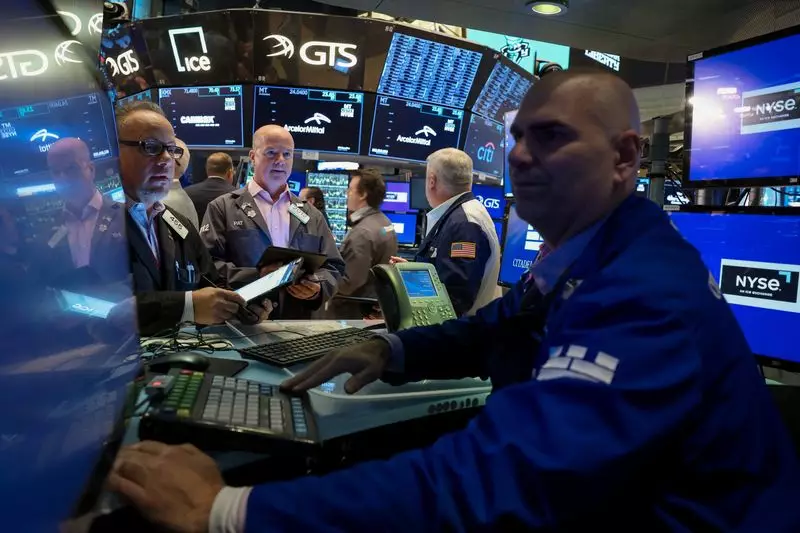In a week punctuated by fluctuations in investor sentiment, the Nasdaq Composite managed to achieve a modest increase, bolstered primarily by the performance of megacap technology stocks. On Friday, this index rose by 103.12 points, or 0.56%, closing at 18,518.61. This surge reflects a broader trend where investors seem to be cautiously optimistic as they await quarterly earnings from some of the most high-profile companies on Wall Street in the upcoming week. The anticipation surrounding these corporate results has created a tangible buzz in the market, providing a much-needed lifeline amid anxious economic forecasts.
Tesla, the iconic electric vehicle manufacturer, was a pivotal player this week, with its stocks skyrocketing by 3.36% after an impressive 22% surge the previous day. This spike can be attributed to robust sales forecasts igniting renewed investor enthusiasm. Brian Jacobsen, chief economist at Annex Wealth Management, highlighted that such positive indicators from Tesla might imply that the rally involving high-value technology stocks, referred to as the “Magnificent Seven,” remains resilient. The term emphasizes the focus on companies that have been significantly impacted by developments in artificial intelligence and other tech innovations.
Nvidia, another heavyweight in the chip manufacturing sector, also saw substantial gains, even briefly overtaking Apple in market valuation. This dynamic underscores the growing demand for technology and the broader embrace of AI, which continues to reshape market trends and investor strategies.
Amidst these individual stock movements, the broader economic landscape remains cautiously watchful. The yield on the benchmark 10-year Treasury note inched up, reflecting investors’ wariness as they prepare for upcoming employment data that is poised to influence potential Federal Reserve interest rate cuts. Earlier this week, yields climbed to a three-month high of 4.26%, contributing to a general unease across the stock market.
In contrast with the buoyant Nasdaq, the Dow Jones Industrial Average faced a downturn, dropping 259.96 points (0.61%), influenced by significant declines in banking shares. This includes a 2.27% loss for Goldman Sachs, alongside McDonald’s facing a 2.97% decline linked to public health concerns regarding an E. coli outbreak. Such developments highlight the interconnectedness of sector performance and external factors, which can drastically affect investor confidence.
The uncertainty surrounding the upcoming U.S. presidential election adds another layer of complexity for investors, with many adopting a more cautious approach. The election has become a pivotal focus, as it can significantly impact market dynamics, particularly for industries sensitive to political shifts. Michael Rosen, Chief Investment Officer at Angeles Investments, noted that the volatility seen in banking stocks might be partly related to changing perceptions of political odds—especially as former President Donald Trump’s prospects gain traction.
Amidst these concerns, the fall of the regional lender New York Community Bancorp by 8.26% after posting losses stemming from commercial real estate investments further echoed the challenges faced by the banking sector. Such dismal performance is indicative of larger trends affecting market stability, underscoring the multifaceted nature of economic analysis.
The Week Ahead: Anticipation Builds
Looking ahead, the week commencing October 28 is set to be a critical period for Wall Street with earnings reports from several “Magnificent Seven” companies expected alongside vital economic releases, including the October U.S. nonfarm payrolls. As Paul Eitelman, Chief Investment Strategist at Russell Investments, highlighted, this week looms large for stakeholders who are keenly observing how these developments will influence market trajectories.
Moreover, shifts in economic indicators and corporate performance can lead to reactions from the Federal Reserve concerning future interest rate policies, with investors currently pricing in expectations for at least one more rate cut before the year’s end. This complex interplay of earnings announcements, economic data, and external political uncertainties will undoubtedly shape the financial landscape in the weeks to come.
As investors strategize based on emerging information, market behaviors will reflect the ongoing dance between optimism and caution that defines trading environments—where each data point holds the potential to sway decisions and reshape market narratives.

